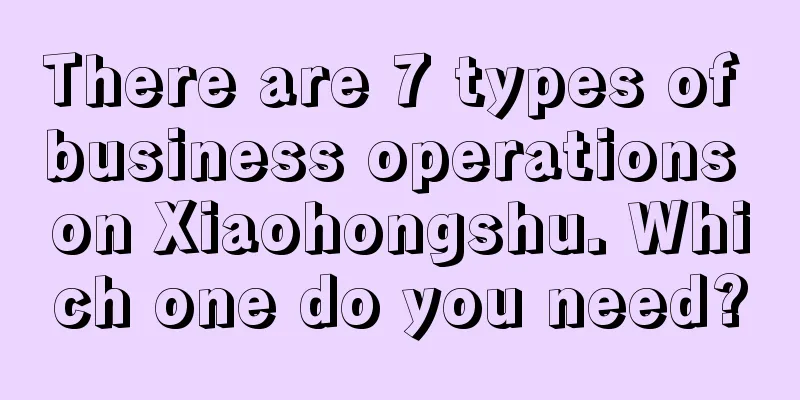9.9 yuan, to rectify or save hot pot? | Midfield War

The tide of consumption downgrade finally surged into the hot pot industry. The profits of leading brands plummeted, sounding the alarm for industry reshuffle. On August 2, Xiabu Xiabu Group released its semi-annual report forecast, showing that its expected revenue is approximately 2.4 billion yuan, a year-on-year decrease of approximately 15.9%; it will record a net loss of approximately between 260 million yuan and 280 million yuan, while it recorded a net profit of 212 million yuan in the same period last year. Xiabu Xiabu turned from profit to loss, mainly due to the weak consumption trend and consumption downgrade in the overall market environment, which led to a low willingness of restaurant customers to visit the store. Not long ago, the Jiu Mao Jiu Group's revenue increased but its profits did not, which sent out a signal in advance that the hot pot industry was seriously involuted. Even though it proactively lowered prices, the turnover rate still declined. According to the profit warning released by Jiu Mao Jiu Group, the revenue in the first half of the year is expected to be 3.064 billion yuan, an increase of about 6.4% year-on-year; the net profit is expected to be no less than 0.67 billion yuan, a year-on-year decrease of no more than 69.8%. Among them, the performance of its subsidiary Shuang Hotpot was the most seriously affected. As soon as the news came out, the stock price fell by nearly 5%. The question is, is lowering prices still a good way to break the deadlock? 01 Are there no survivors in the price war?In the first half of 2023, Shuang Hotpot rose to the second growth curve of Jiu Mao Jiu Group. In the first half of 2024, Shuang Hotpot became the biggest drag. Financial report data shows that in the second quarter of 2024, the average consumption per customer of Shuang Hotpot was 104 yuan, 17 yuan less than in the first half of last year, the largest drop among all brands of the group. In the first half of last year, Shuang Hotpot had only 43 stores, but this year the number increased to 73. However, the average daily sales of the same stores shrank by 36.6%, a drop greater than the combined sales of Tai Er Pickled Fish and Jiu Mao Jiu Northwestern Cuisine. In the first quarter, the year-on-year decline was 34.8%, indicating that Shuang Hotpot's performance is deteriorating. As consumers are not buying its products, Shuang Hotpot is forced to slow down its expansion. In order to alleviate performance pressure, Jiu Mao Jiu Group stated that it will adopt a prudent expansion strategy and adjust the 2024 expansion target set at the beginning of the year, adjusting the goal of opening 35-40 new Shuang Hotpot restaurants to 25. The rapid changes in the situation are closely related to the highly inward-looking environment of the hot pot industry. Many brands have adopted models such as "9.9 yuan" and "free eating" in an attempt to seize the market at low prices. In fact, as early as September 2023, Haidilao launched a new sub-brand "Hi Lao Hotpot" (later renamed "Xiao Hai Hotpot"), focusing on affordable hotpot, with the base price as low as 9.9 yuan, and lowered the prices of some dishes, driving Haidilao's average customer unit price to less than 100 yuan. This move by the industry leader caused many brands to feel a sense of crisis, and eventually pushed the price war to a climax in 2024. At the beginning of this year, Banu began to adjust its prices, with the average customer unit price dropping from 144 yuan in January to 130 yuan in May. Following last year's disguised price reduction by increasing the number of smaller portions, Xiabu Xiabu went a step further in May this year, generally reducing unit prices by more than 10%, bringing the average customer spending back to less than 60 yuan. Also in May, Nan Hotpot announced the opening of the store 3.0 era, launching vegetarian dishes at 1.9 yuan, fresh beef at 9.9 yuan, and hotpot bases at 39.9 yuan. Faced with competitive pressure, Shuang Hotpot also took the initiative to "give in", and posted a notice in its stores in June, lowering its price system, with hotpot base starting at 8 yuan, meat dishes starting at 9.9 yuan, vegetarian dishes starting at 6.6 yuan, and all-you-can-eat stewed rice starting at 6 yuan. In addition, Shuang Hotpot also promotes money-saving strategies on social platforms, teaching consumers how to "get the best deals". Posts such as "DIY three-grid hotpot base for 24 yuan" and "Poor people's money-saving methods for eating at Shuang Hotpot" are trying hard to narrow the distance with consumers. Baheli Beef Hotpot, which has topped the must-eat list for eight consecutive years, announced late but finally on July 1 that "prices will return to what they were 10 years ago." The first price adjustment involves many hot-selling products including premium tender meat, signature fatty beef, raw beef balls, cooked beef balls, cooked beef tendon balls, Chaoshan cuttlefish balls, etc. The price of large orders of premium tender meat has been reduced from 32 yuan to 28 yuan. A research report by Zheshang Securities shows that, except for Xiabu Xiabu, the average customer spending of the leading hotpot brands has continued to be under pressure since September last year, with Shuang Hotpot having the greatest impact and Xiabu Xiabu being the most hesitant. (Trend of average customer spending of major hotpot brands (compared to June 2023), source: Zheshang Securities Research Report) This is the case for the large first-tier brands. In order to attract customers, many small and medium-sized hotpot restaurants have launched cash coupons of "9.9 for 100 yuan" on major group buying platforms, or activities such as eating pork loin, tripe, beef and other hotpot dishes for 9.9 yuan, with "free" side dishes. After more than half a year, the price reduction has failed to bring significant market growth to Shuang Hotpot, and Xiabu Xiabu has also been hurt. It expects both revenue and profit to decline, with a net loss of approximately 260 million to 280 million yuan, turning from profit to loss year-on-year. 02 In fact, returning to normal levels?In the past, consumers liked to say, "There is nothing that can't be solved by a hot pot meal, and if that doesn't work, then two meals will do." As a result, hot pot restaurants have become one of the most representative of the fireworks. But gradually, workers discovered that the magic of hot pot in relieving the stress of life has not disappeared, but when it comes time to pay the bill, their stomachs are full but their wallets are significantly thinner. In the first few years of this round of price cuts, the average customer spending in the hotpot industry continued to rise, with a hotpot meal costing hundreds of yuan, making working people say that it was "too unaffordable" and feel stabbed in the back. A Chongqing netizen once complained incisively that a hotpot meal for two people used to cost 80 yuan per person, and they had to lean on the wall to eat out. Now it costs 100 yuan per person, and people dare not order anything casually. In early 2023, a customer in Xi'an said that the 18-yuan potato dish at Banu Hotpot only had five slices, which made "sky-high-priced potatoes" a hot topic. Although Banu Hotpot quickly apologized, it also said that it "will not consider lowering prices for the time being", leaving netizens with a cold impression. Banu Hotpot was founded in Zhengzhou, Henan in 2001 as a competitor to Haidilao. According to Jiuqian Consulting, from 2018 to 2020, the brand grew rapidly, and its products also increased in price every year. The popular product tripe rose from 65 yuan to 78 yuan, and the per capita consumption was close to 200 yuan. Haidilao is also often at the center of controversy because of disguised price increases. In 2022, Haidilao cancelled beef cubes, snacks and other categories, while reducing the amount of dishes to reduce raw material costs. In 2023, some stores still charged 8 yuan per person for self-service drinks. Data shows that Haidilao has indeed become more and more expensive in the past few years, with the average customer spending rising from 97.7 yuan in 2017 to 110.1 yuan in 2020. From 2021 to the first half of 2023, the average customer spending remained above 100 yuan. The price of hot pot is determined by market supply and demand. Hot pot has long been ranked as the largest category in the catering industry and is one of the hottest entrepreneurial tracks, attracting a large amount of capital. During the period of working from home, the first thing that consumers want to do most is to eat hot pot. Therefore, hot pot has become the first category to recover in the catering industry. The demand side has driven the prosperity of the hot pot industry, giving hot pot restaurant owners the courage to raise prices and expand aggressively. The "China Catering Development Report 2022" shows that the scale of my country's hot pot market decreased to 526.8 billion yuan in 2020, rebounded in 2021, reaching 563 billion yuan. The overall scale is expected to reach 604.6 billion yuan in 2022, and the number of stores will reach 550,000, firmly maintaining its No. 1 position in the catering segment. Nowadays, things have changed. Consumers have become more price sensitive and are pursuing higher cost-effectiveness. They are no longer easily willing to pay for high-priced hot pots, bringing the hot pot industry to another extreme. But by comparison, we can see that even though hot pot restaurants have slashed their prices now, consumers still feel that they are not cheap. Haidilao's 2023 financial report shows that its average customer spending is 99.1 yuan, which has fallen to the lowest level in the past five years, but is more expensive than 97.7 yuan in 2017, and the portion size often decreases instead of increases. The average customer spending per customer of Xiabu Xiabu in 2023 was 62.2 yuan, while in 2011, it was only 35.2 yuan, making it very popular among working people. Rather than saying that hotpot brands are lowering prices to please consumers, it is more accurate to say that consumers are voting with their feet, protesting against the overly high prices of hotpot, forcing hotpot restaurants to lower their prices. 03 How to call diners back to the table?The power of the price war has already been revealed. According to data from Zhaimen Canyan, as of July 6, about 210,000 new hot pot restaurants were added in the past year, but the net increase was only about 68,000. The financial report shows that last year, Xiabu Xiabu Group closed 114 stores, including 99 Xiabu Xiabu stores and 15 Coucou stores, resulting in the provision of related asset impairment losses of approximately 165 million yuan. In response, Xiabu Xiabu explained that the reason for closing these stores was that most of them were incurring losses and most of them did not conform to the regional operation of the "high cost-effectiveness" model promoted by Xiabu Xiabu. Xiabu Xiabu may understand best the losses suffered due to price increases. Xiabu Xiabu, which specializes in small hotpot for one person, was once widely popular due to its extremely high cost-performance ratio. As a result, it was named the "No. 1 chain hotpot stock" in 2014, a full 4 years earlier than Haidilao. But after going public, Xiabu Xiabu strayed further and further from its original aspirations. From 2014 to 2023, it raised prices every year, with the average customer price rising from 44.4 yuan to 62.2 yuan, an increase of more than 40%. Compared with the average customer price of 35.2 yuan in 2011, the increase was as high as 76.7%. Amid the general trend of price cuts in the hotpot industry, Xiabu Xiabu bucked the trend and raised prices in January this year. Except for the original flavor hotpot and Sukiyaki hotpot, the prices of other hotpot bases increased by 3 yuan, which naturally attracted complaints from netizens. Behind the price increase is Xiabu Xiabu’s dream of becoming a high-end restaurant and striving to catch up with Haidilao. In 2016, Xiabu Xiabu underwent a brand transformation and launched a high-end sub-brand, Coucou Hotpot, which features the "hotpot + tea" model. It attempted to fill the market gap other than small hotpot. The pace of store opening has remained at a relatively fast pace. In 2019, a new store was opened every 13 days on average. As a result, the company did not make the profit it wanted, but instead fell into a quagmire of losses. From 2022 to 2023, Coucou Hotpot lost 71.1 million yuan and 295.7 yuan respectively, while Xiabu Xiabu Group was profitable in 2023. In the financial report, the group admitted that Coucou Hotpot was still too expensive. Xiabu Xiabu could have enjoyed the benefits of the affordable market, but instead lost a large number of users for the difficult high-end market, which is not cost-effective. After all, when Xiabu Xiabu was struggling to capture the high-end market, a group of small hotpot brands took the opportunity to rise. In 2023, Wei La Hotpot opened more than 280 stores, and Qianwei Yiding Self-service Hotpot opened more than 300 stores in one go, reflecting that affordable brands still have huge opportunities. In contrast, Haidilao, which Xiabu Xiabu envies, is obviously much more aware of pricing power. After the average customer spending reached a peak of 110.1 yuan in 2020, Haidilao realized that there were more negative reviews from consumers and began to gradually lower prices, further dropping to 99.1 yuan in 2023. After experiencing the pain of a loss of 4.16 billion yuan in 2021, Haidilao achieved a net profit of approximately 1.373 billion yuan in 2022, and its net profit increased significantly to 4.495 billion yuan in 2023, a year-on-year increase of 174.6%. But for businesses, simply lowering prices is obviously not enough. "Brands claim that 'prices can be reduced without reducing quality', which shows their confidence in supply chain management. A strong supply chain can not only help brands reduce costs, but also ensure the stability of product quality. It is an important weapon for brands to deal with price wars." said an industry insider. In 2022, Haidilao implemented the "Woodpecker Plan" to slow down its expansion, optimize its supply chain, and reduce procurement costs. In 2023, it continued to reduce raw material costs by increasing the proportion of pre-made dishes. Other players, such as Shuang Hotpot, have also noticed this. Jiu Mao Jiu Group revealed that it has transferred "Na Wei Uncle is the Chef" and "Lai Meili Sour Soup Grilled Fish" to focus resources on operating Tai Er Pickled Cabbage Fish and Shuang Hotpot, taking a multi-pronged approach in terms of products, channels, and brands to cater to market changes. 04 ConclusionThere is a view that Sichuan hotpot originated from Xiaomitan, Luzhou, a wine city on the bank of the Yangtze River. Boatmen used various vegetables, added chili peppers, peppercorns and other seasonings, cooked them in earthenware pots and ate them to drive away the cold and dampness. For this delicacy that originated from the market, affordability, eating whenever you want and deliciousness are equally important. Author | Liu Ping |
<<: What is lifestyle e-commerce?
Recommend
Without public domain, you can’t grow big; without private domain, you can’t be stable
This is an era of omni-domain marketing. The value...
What should we pay attention to on eBay Germany? How to do it well?
There are many cross-border e-commerce platforms n...
How long does it take to stabilize the distribution of goods on Amazon? What is the principle of distribution?
Some merchants on Amazon are using the distributio...
Thinking from the perspective of social significance: branding and de-branding
The power of brands is everywhere in today's s...
To formulate a strategy, you need the courage to be hated
Strategy means giving up, and giving up means bein...
Review interviews and salary negotiations, you will definitely need it
Introduction: This article is an interview and job...
What is the difference between Amazon's overseas self-operated business and overseas shopping? Which one is better?
Many friends on Amazon will choose to buy goods in...
What are the reasons for Amazon sellers to be banned? How to appeal?
Amazon seller account is the foundation for seller...
How to operate a no-source store?
In addition to the common self-delivery model, Sho...
What are the requirements for opening an Amazon business? Are the requirements high?
Some of the merchants who have opened stores on Am...
As we enter the second half of 2023, how should we plan our video accounts?
As the value of video account live broadcast gradu...
From the role positioning of "Chang Xiang Si" to the brand's hidden line
This article uses the four male archetypes of &quo...
These merchants who "listened to the advice" all started to make things because they saw two great potentials.
This article deeply analyzes how the Douyin platfo...
A must-have guide for TikTok marketing: Learn about Big Data Engine in one article
Do you feel lost and helpless on the road of Douyi...
With a year-on-year growth of 250%, does going overseas mean setting up a street stall in the United States?
This article introduces how to operate a brand ove...









